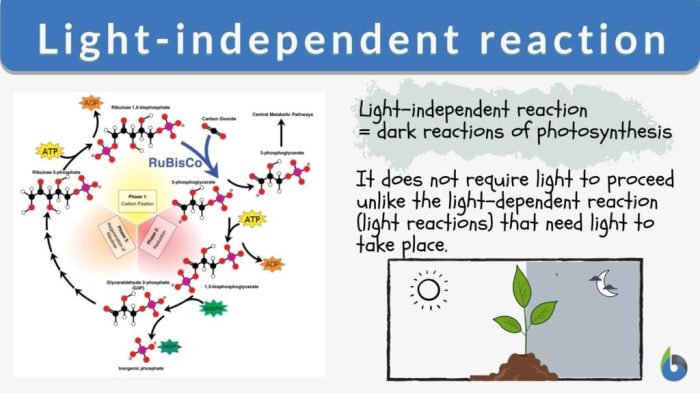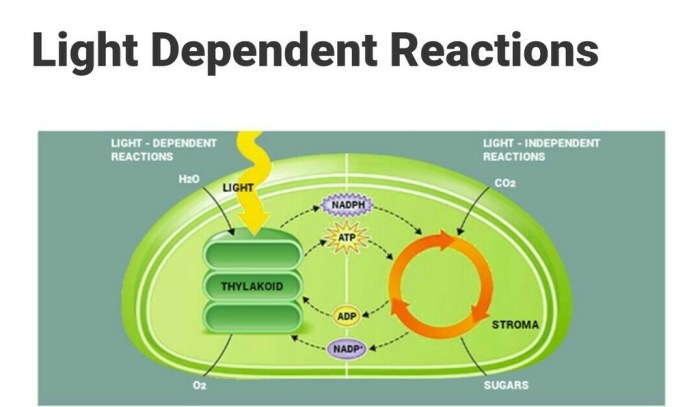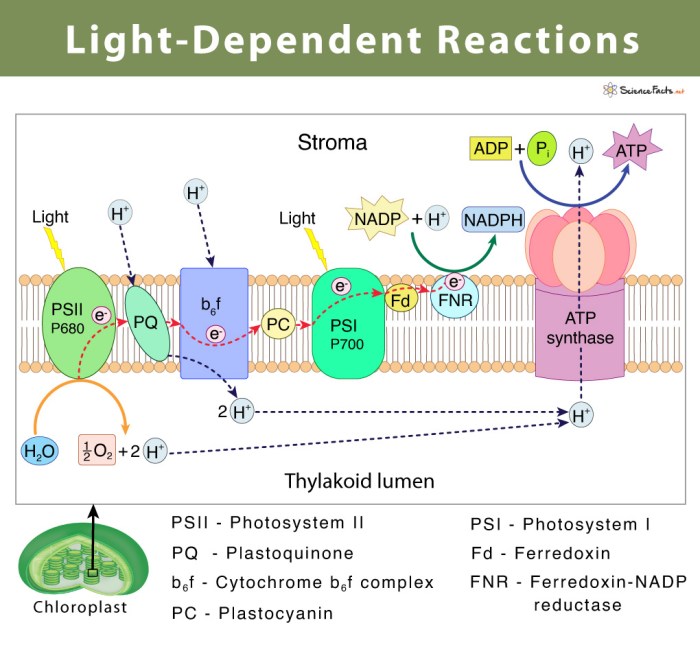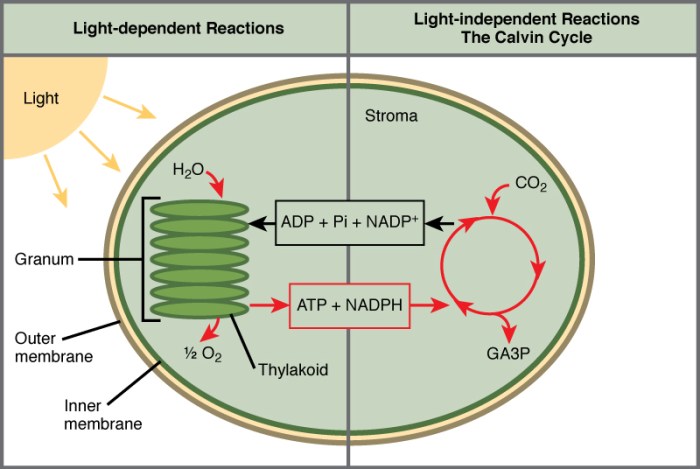The Light Dependent and Light Independent Reactions Venn Diagram provides a comprehensive visual representation of the two essential stages of photosynthesis. This diagram highlights the similarities and differences between these reactions, enabling a deeper understanding of the process by which plants convert light energy into chemical energy.
The light-dependent reactions occur in the thylakoid membranes of chloroplasts and involve the conversion of light energy into ATP and NADPH. The light-independent reactions, also known as the Calvin cycle, occur in the stroma of chloroplasts and utilize the ATP and NADPH produced in the light-dependent reactions to fix carbon dioxide and produce glucose.
Light-Dependent Reactions: Light Dependent And Light Independent Reactions Venn Diagram

The light-dependent reactions of photosynthesis are a series of chemical reactions that convert light energy into chemical energy, which is stored in the form of ATP and NADPH. These reactions take place in the thylakoid membranes of chloroplasts.
Role of Chlorophyll and Light Energy, Light dependent and light independent reactions venn diagram
Chlorophyll is a green pigment that absorbs light energy from the sun. This energy is then used to split water molecules into hydrogen ions (H+) and oxygen atoms (O). The hydrogen ions are used to produce ATP, while the oxygen atoms are released as a waste product.
Two Main Stages of Light-Dependent Reactions
- Light reactions:These reactions use light energy to produce ATP and NADPH.
- Calvin cycle:This cycle uses ATP and NADPH to fix carbon dioxide into glucose.
Light-Independent Reactions

The light-independent reactions of photosynthesis are a series of chemical reactions that use the ATP and NADPH produced by the light-dependent reactions to convert carbon dioxide into glucose. These reactions take place in the stroma of chloroplasts.
Role of ATP and NADPH
ATP and NADPH provide the energy and reducing power necessary for the Calvin cycle to occur.
Steps Involved in the Calvin Cycle
- Carbon dioxide fixation:Carbon dioxide is added to a molecule of ribulose 1,5-bisphosphate (RuBP).
- Reduction:The resulting molecule is reduced to two molecules of 3-phosphoglycerate (3-PGA).
- Regeneration of RuBP:One molecule of 3-PGA is used to regenerate RuBP, while the other two molecules are used to produce glucose.
Comparison of Light-Dependent and Light-Independent Reactions

The light-dependent and light-independent reactions of photosynthesis are two distinct but interdependent processes. The following Venn diagram compares the two processes:
[Diagram Venn di sini]
Similarities:
- Both processes are essential for photosynthesis.
- Both processes occur in chloroplasts.
- Both processes use carbon dioxide.
Differences:
- The light-dependent reactions require light energy, while the light-independent reactions do not.
- The light-dependent reactions produce ATP and NADPH, while the light-independent reactions use ATP and NADPH.
- The light-dependent reactions occur in the thylakoid membranes, while the light-independent reactions occur in the stroma.
Detailed FAQs
What is the role of chlorophyll in photosynthesis?
Chlorophyll is a green pigment that absorbs light energy from the sun and converts it into chemical energy.
What are the products of the light-dependent reactions?
The products of the light-dependent reactions are ATP and NADPH.
What is the role of ATP and NADPH in the Calvin cycle?
ATP and NADPH provide the energy and reducing power necessary for the Calvin cycle to fix carbon dioxide and produce glucose.
